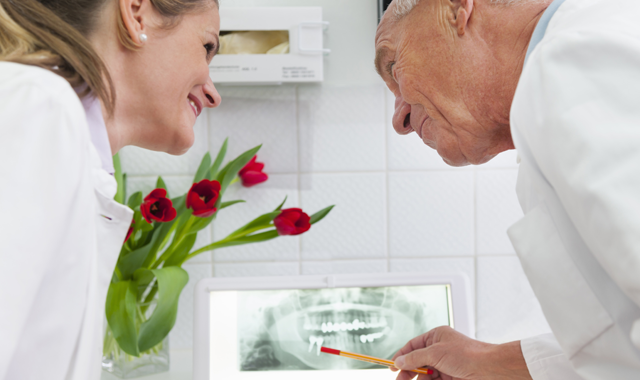6 tips for switching to digital dentistry
Making the switch to digital dentistry may seem overwhelming, but these tips can help to ensure a smooth transition.
The digital overhaul of your dental practice management is one of the most important steps you can take toward making your dental practice more efficient and less labor-intensive. This will eventually lead to enhanced services and advanced patient care.

Multiple procedures in dentistry have been developed over years to make them more accurate and effective with the help of digital technology. These procedures are wide-ranging and comprise not just superior computer-aided tools for delivering exceptional results, but also smart modules that improve the communication between the entire team, thus uplifting the quality of their services.
Trending article: Exploring a new era of collaborative dentistry
Computerized-aided design (CAD) and computer-aided manufacturing (CAM) are some of the most popular digital advancements in digital dentistry as they rank high on efficiency, speed and accuracy. They are used to design and manufacture metal frameworks, inlays, implant abutments, all-ceramic and full contour crowns, and veneers.
When paired with data from cone-beam computed tomography (CBCT)-another advanced digital scanning technology-both provide path-breaking advancements in implant diagnostics and treatment planning. The surgeon, dentist and technicians benefit from a plethora of surgical and prosthetic options.
Here are six important tips to help you switch successfully to digital dentistry.
Click through the slides to read more.


1. Start with a comprehensive goal
Integrating digital dentistry with your dental practice requires comprehensive thinking. You need to think and plan how it will work with every aspect of your practice. This includes the work procedures, team readiness and the clinical skills. Only then can your efforts translate into substantial and satisfactory outcomes.
Related reading: 7 ways 3D printing is changing everything
Study and understand how you and your team will adopt the new practices and technologies to deliver enhanced patient care. This requires personal involvement and transparent communication with your team members to make sure they understand the further plan of action.



2. Foresee pitfalls and plan a mitigation strategy
Some of your team might not be ‘technology savvy.’ Others might not be open to embracing this digital change, or simply lack desire to be trained for it. You should be able to foresee such common pitfalls and plan a mitigation strategy accordingly.
Trending research: Is a fungus causing tooth decay in toddlers?
Interactive and hands-on training are your best tools here. They can help change the perspective of your staff members and open their minds to the benefits of digital dentistry, as it actually provides time, labor and cost efficiency.



3. Discuss the change with your lab
Don’t forget to communicate and discuss this digital transformation with your dental lab. You might need to ascertain the quality of the scans and other digital data you send across to your lab for processing, test the reliability in context of transfer of electronic files, and assess the relative accuracy, cost and response time from your lab. This collaboration will ensure that you get the best from the digital upgrade of your dental practice.



4. Be attentive to details
New digital technology in your dental clinic will mean that you need to alter not only your old practices but the materials and techniques used for clinical procedures as well. Pay great attention to prep design requirements and the manufacturer’s suggestions for any new technology that you might be using.



5. Never stop learning
Switching traditional clinical and operational practices with contemporary digital technologies may seem overwhelming. But you can ease this transition by being committed to never stop learning. And always stay up to date with procedures and technologies changing dentistry.
Read more: How to manage disaster recovery with data backups
Approaching new trends in dentistry with an open mind will help you learn and adapt to them faster. This in turn will not only expand your knowledge and technical know-how, but will also help you and your team to provide the best of dental services to your patients.



6. Patience is key
Patience and perseverance will help you accomplish your goal of digital integration successfully. It is important to remember that you and your team are both learners, and every individual has a different pace of adapting to changes.
Related article: 5 EHR tips that could save your dental practice
As an owner and leader, you need to patiently and continually keep guiding your team throughout this process. Only then can you as a team achieve your goal of integrating digital dentistry and delivering exceptional patient care.
Digital dentistry requires an investment of persistence whether learning or practicing. Be committed and this investment is sure to boost the outcomes of your practice.

How Dentists Can Help Patients Navigate Unforeseen Dental Care
December 12th 2024Practices must equip patients with treatment information and discuss potential financing options before unexpected dental treatments become too big of an obstacle and to help them avoid the risk of more costly and invasive procedures in the future.
Product Bites – January 19, 2024
January 19th 2024Product Bites makes sure you don't miss the next innovation for your practice. This week's Product Bites podcast features new launches from Adravision, Formlabs, Owandy Radiology, Henry Schein Orthodontics, Dental Creations, and Dental Blue Box. [5 Minutes]